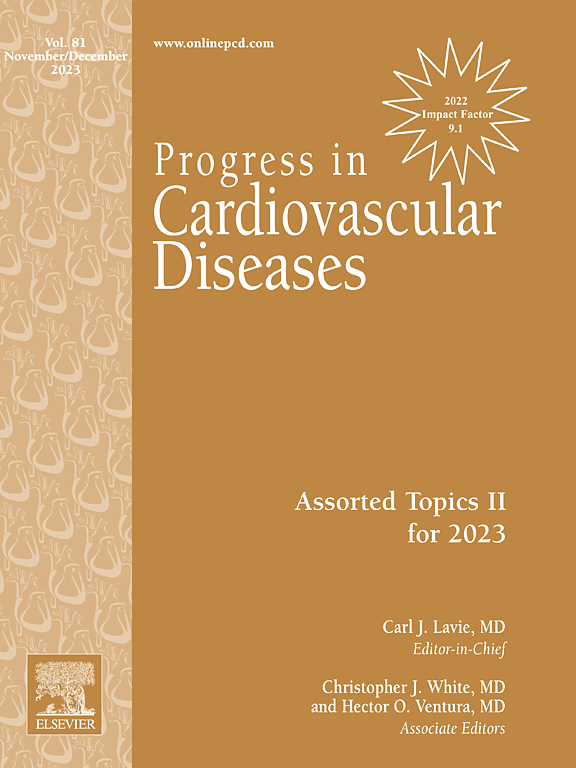Unlocking insights: Clinical associations from the largest 6-minute walk test collection via the my Heart Counts Cardiovascular Health Study, a fully digital smartphone platform
IF 7.6
2区 医学
Q1 CARDIAC & CARDIOVASCULAR SYSTEMS
引用次数: 0
Abstract
Background
The six-minute walk test (6MWT) is a prognostic sub-maximal exercise test used clinically as a measure of functional capacity. With the emergence of advanced sensors, 6MWTs are being performed remotely via smartphones and other devices. The My Heart Counts Cardiovascular Health Study is a smartphone application that serves as a digital platform for studies of human cardiovascular health, and has been used to perform 30,475 6MWTs on 8922 unique participants.
Objective
As our 30,475 6MWTs represent the largest such collection of data available, we sought to identify associations with measured demographic and clinical variables with 6MWT distance at enrollment and separately determine if use of the My Heart Counts smartphone application led to changes in 6MWT distance.
Methods and results
We present the public data release of our 30,475 6MWTs and the launch of a webpage-based data viewer of summary-level statistics, to compare the functional capacity of an individual by their age, gender, height, weight, and disease status (https://mhc-6mwts.streamlit.app). Using multivariable regression, we report associations of demographic and clinical variables with baseline 6MWT distance (N = 3606), validating prior associations with age, male gender, height, and baseline physical activity level with 6MWT distance. We also report associations of 6MWT baseline distance with employment status (+12.4 m 4.9 m, P = 0.011) and feeling depressed (−3.65 m, 0.79 m, P < 0.001). We separately found that cardiovascular disease status was significantly associated with decreased 6MWT distance for atrial fibrillation (−24.9 m 7.8 m, P = 0.0013), peripheral artery disease (−41.7 m 12.5 m, P < 0.001), and pulmonary arterial hypertension (−76.3 m 24.8 m, P = 0.0022). Heart failure was associated with decreased 6MWT distance but was not statistically significant (−25.5 m 14.5 m, P = 0.078). In a subset of participants who conducted repeat 6MWTs separated by at least 1 week but no greater than 3 months (N = 1129), we found that use of the My Heart Counts app was associated with a statistically significant increase in 6MWT distance (+17.5 m 7.85 m, P < 0.001).
Conclusions
We validate previously identified associations from clinic-performed 6MWTs, demonstrating the utility of a mobile method in collecting 6MWT data for clinicians and researchers. We also demonstrate that use of the My Heart Counts app is associated with small, but significant increases in 6MWT distance. Given the importance of 6MWTs in assessment of functional capacity, our publicly-available data will serve an important purpose as a health and disease-specific reference for investigators worldwide.
解锁见解:通过我的心脏计数心血管健康研究,一个全数字智能手机平台,从最大的6分钟步行测试收集的临床关联。
背景:六分钟步行测试(6MWT六分钟步行测试(6MWT)是一种预后性的亚最大运动测试,临床上用作功能能力的测量。随着先进传感器的出现,6MWT 可通过智能手机和其他设备远程进行。我的心算 "心血管健康研究是一款智能手机应用程序,是研究人类心血管健康的数字平台,目前已对 8922 名参与者进行了 30475 次 6MWT 测试:由于我们的 30,475 次 6MWT 代表了目前最大的此类数据收集,因此我们试图确定测量的人口统计学和临床变量与注册时 6MWT 距离的关联,并分别确定使用 "我的心脏计数 "智能手机应用程序是否会导致 6MWT 距离的变化:我们发布了 30,475 次 6MWT 的公开数据,并推出了基于网页的汇总级统计数据查看器,以比较不同年龄、性别、身高、体重和疾病状态的个人功能能力 (https://mhc-6mwts.streamlit.app)。通过多变量回归,我们报告了人口统计学和临床变量与基线 6MWT 距离的关系(N = 3606),验证了之前的年龄、男性性别、身高和基线体力活动水平与 6MWT 距离的关系。我们还报告了 6MWT 基线距离与就业状况(+12.4 米 ±4.9 米,P = 0.011)和抑郁情绪(-3.65 米,±0.79 米,P 结论)的关系:我们验证了之前从诊所进行的 6MWT 中发现的关联,证明了移动方法在为临床医生和研究人员收集 6MWT 数据方面的实用性。我们还证明,使用 "我的心脏计数 "应用程序与 6MWT 距离的小幅但显著增加有关。鉴于 6MWT 在功能能力评估中的重要性,我们公开发布的数据将为全球研究人员提供重要的健康和特定疾病参考。
本文章由计算机程序翻译,如有差异,请以英文原文为准。
求助全文
约1分钟内获得全文
求助全文
来源期刊

Progress in cardiovascular diseases
医学-心血管系统
CiteScore
10.90
自引率
6.60%
发文量
98
审稿时长
7 days
期刊介绍:
Progress in Cardiovascular Diseases provides comprehensive coverage of a single topic related to heart and circulatory disorders in each issue. Some issues include special articles, definitive reviews that capture the state of the art in the management of particular clinical problems in cardiology.
 求助内容:
求助内容: 应助结果提醒方式:
应助结果提醒方式:


